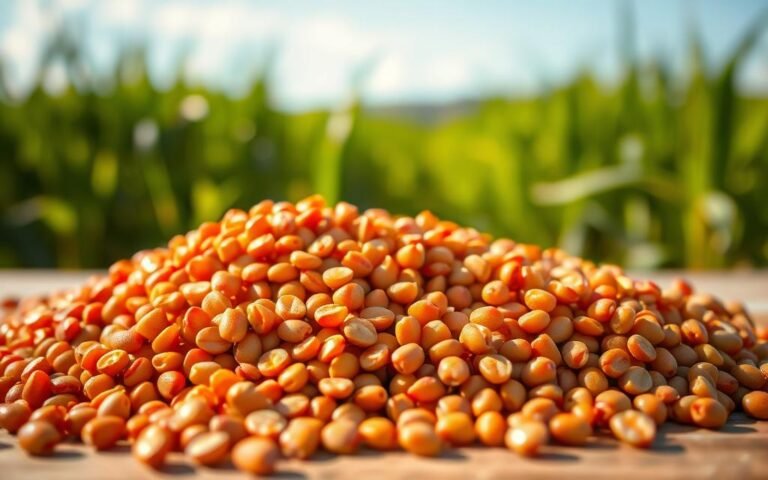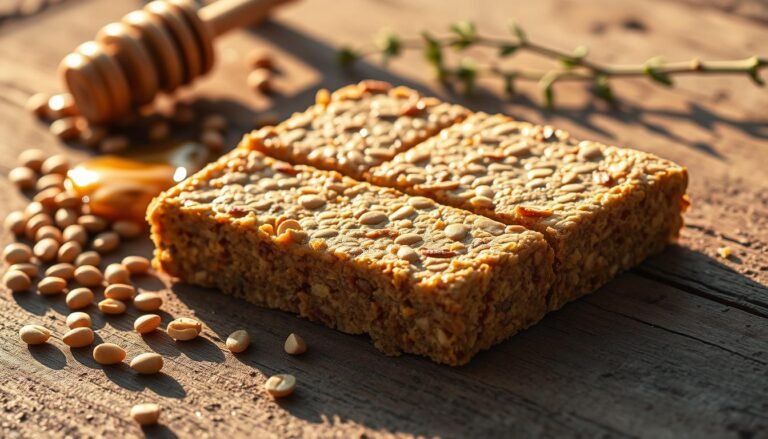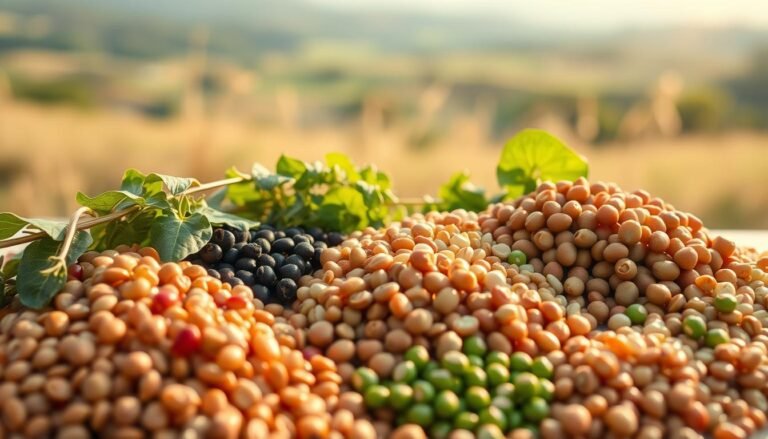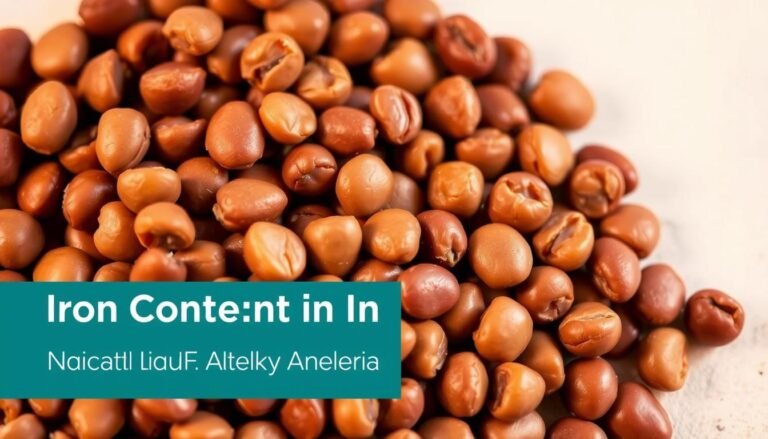Iron deficiency is a common issue, particularly among women and vegetarians, leading to symptoms like low energy, breathlessness, and headaches. Iron is an essential nutrient for many bodily functions, and a lack of it can cause anemia or other health problems.
Lentils are an excellent plant-based source of iron, making them a great addition to a diet. According to Healthline, legumes like lentils contain a significant amount of iron, with 6.6 mg per cup cooked. Consuming lentils along with vitamin C-rich foods can help increase iron absorption.
Key Takeaways
- Lentils are a rich source of iron, making them ideal for vegetarians.
- Iron deficiency can cause anemia, fatigue, and other health issues.
- Consuming vitamin C-rich foods with lentils enhances iron absorption.
- Lentils are a great dietary addition for women at risk of iron deficiency.
- A diet rich in iron can help prevent anemia and related health problems.
The Iron Dilemma: Why Many Australians Are Deficient
Many Australians are unknowingly suffering from iron deficiency, a condition that can have serious health implications. Iron deficiency is a widespread issue, affecting a significant portion of the population, including women, children, and vegetarians.
Common Signs of Iron Deficiency
Recognizing the signs of iron deficiency is crucial for early intervention. Common symptoms include tiredness, difficulty concentrating, and shortness of breath. If left untreated, iron deficiency can lead to more severe health issues, such as iron deficiency anemia.
At-Risk Groups in the Australian Population
Certain groups within the Australian population are more susceptible to iron deficiency. These include women of childbearing age, children, and individuals following a plant-based diet. According to the US CDC, nearly 10% of women aged 12–49 are iron deficient. Vegetarians, vegans, and frequent blood donors are also at a higher risk. Understanding these risk factors can help in taking preventive measures.
By being aware of the risks and taking steps to maintain adequate iron levels, Australians can reduce their likelihood of developing iron deficiency and its associated complications.
Understanding Iron: Heme vs. Non-Heme Sources
Understanding the difference between heme and non-heme iron is vital for maintaining healthy iron levels, particularly for vegetarians and vegans. Iron is an essential mineral that plays a critical role in transporting oxygen throughout the body.
Heme iron, found in animal products like meat, poultry, and fish, is more easily absorbed by the body compared to non-heme iron, which is found in plant-based foods such as lentils, beans, and leafy greens. This difference in absorption is crucial for individuals looking to boost their iron intake.
The Bioavailability Challenge
The bioavailability of iron refers to how easily the body can absorb it. Heme iron has a higher bioavailability compared to non-heme iron. However, the absorption of non-heme iron can be enhanced by consuming it with vitamin C-rich foods.
Plant-Based Iron Absorption Rates
Non-heme iron absorption rates can vary significantly based on the type of plant food and the presence of other nutrients. For instance, lentils are a good source of non-heme iron, and when consumed with foods high in vitamin C, such as citrus fruits or bell peppers, their iron absorption can be significantly improved.
| Food | Iron Content (mg per 100g) | Vitamin C Content (mg per 100g) |
|---|---|---|
| Lentils | 3.9 | 1.5 |
| Citrus Fruits | 0.6 | 53 |
| Bell Peppers | 0.8 | 125 |
By understanding the differences between heme and non-heme iron and how to enhance the absorption of non-heme iron, individuals can make informed dietary choices to maintain healthy iron levels.
Why Women Need More Iron Than Men
Iron is a crucial nutrient for women, particularly because of the monthly menstrual cycle and the demands of pregnancy. Unlike men, who generally have a steady state of iron, women’s iron levels can fluctuate significantly due to reproductive processes.
Menstruation and Iron Loss
Menstruation is a significant factor in iron loss for women. On average, women lose about 30-40 milliliters (ml) of blood per menstrual cycle, which translates to a loss of approximately 15-20 milligrams (mg) of iron per month. This regular loss means women need to consume more iron to maintain healthy levels. Including iron-rich foods in the diet is essential to compensate for this monthly loss.
Pregnancy and Lactation Requirements
During pregnancy, the demand for iron increases substantially to support the mother’s increased blood volume and the baby’s needs. The iron requirement can be as high as 27 mg per day, significantly more than the 18 mg recommended for non-pregnant women. Adequate iron intake during pregnancy is crucial to prevent iron deficiency anemia, which can have serious health implications for both mother and child. Lactation also requires careful management of iron levels, although the demand is slightly less than during pregnancy.
The Vegetarian’s Guide to Iron Sufficiency
For vegetarians, maintaining adequate iron levels can be challenging due to the lower bioavailability of non-heme iron. However, with the right knowledge and dietary adjustments, vegetarians can easily meet their daily iron needs. Legumes, including lentils, are excellent sources of iron for vegetarians and vegans.

Iron-rich plant foods like lentils can be combined with vitamin C-rich foods to enhance iron absorption. This dietary strategy is crucial for vegetarians to maintain optimal iron levels.
Common Challenges for Plant-Based Eaters
Plant-based eaters often face challenges in maintaining adequate iron levels due to the lower absorption rate of non-heme iron. Common challenges include:
- Limited awareness of iron-rich plant foods
- Inadequate consumption of vitamin C-rich foods to enhance iron absorption
- High intake of foods that inhibit iron absorption, such as tea and coffee
By understanding these challenges, vegetarians can take proactive steps to ensure they meet their daily iron needs.
Lentils: A Nutritional Powerhouse
Lentils are not just a good source of iron; they are a nutrient-dense food that provides a multitude of health benefits. These small, disk-shaped legumes are a staple in many cuisines around the world, particularly valued for their nutritional profile. Beyond their iron content, lentils offer a wealth of other essential nutrients.
Complete Nutritional Profile Beyond Iron
Lentils are rich in protein, fiber, and various minerals, making them an excellent addition to a healthy diet. They are particularly noted for their high content of:
- Folate: crucial for cell division and growth
- Manganese: plays a role in enzyme function and antioxidant defenses
- Copper: important for connective tissue health and immune function
- Phosphorus: vital for bone health and many bodily processes
This diverse nutritional profile supports overall health and can contribute to several health benefits, including improved heart health and better management of blood sugar levels.
Iron Content Compared to Other Plant Foods
Lentils are an excellent source of non-heme iron, which is particularly important for vegetarians and vegans who do not consume heme iron from animal sources. Compared to other plant-based foods, lentils have a relatively high iron content:
- 1 cup cooked lentils: approximately 6.6 mg of iron
- 1 cup cooked spinach: about 4.9 mg of iron
- 1 cup cooked chickpeas: around 4.7 mg of iron
This makes lentils a valuable component of an iron-rich diet, especially when combined with vitamin C-rich foods to enhance iron absorption.
Varieties of Lentils and Their Iron Content
The world of lentils is rich and varied, with different types providing unique advantages in terms of iron content and cooking time. Lentils are a staple in many cuisines around the world, particularly for those looking to increase their iron intake through plant-based sources. Understanding the different varieties can help individuals make informed choices about their diet.
Red Lentils: The Quick-Cooking Option
Red lentils are known for their bright orange-red color and quick cooking time. They tend to break apart during cooking, making them ideal for soups and stews. In terms of iron content, red lentils provide a respectable amount, though slightly less than some other varieties. They are a good starting point for those new to cooking lentils.
Green Lentils: The Protein Powerhouse
Green lentils retain their shape after cooking and have a slightly peppery flavor. They are not only a good source of iron but also high in protein, making them a favorite among vegetarians and vegans. Green lentils are versatile and can be used in salads, stews, and as a side dish.
Brown Lentils: The Versatile Standard
Brown lentils are the most commonly available type and are known for their earthy flavor. They hold their shape well after cooking and are a good all-purpose lentil. In terms of iron, brown lentils offer a moderate amount, making them a reliable choice for regular consumption.
Black Lentils: The Iron Champion
Black lentils, also known as beluga lentils, have a shiny black appearance and retain their shape after cooking. They are particularly high in iron, making them an excellent choice for those looking to maximize their iron intake. Black lentils have a robust flavor and are often used in salads and side dishes.
| Lentil Type | Cooking Time | Iron Content (mg per 100g) |
|---|---|---|
| Red Lentils | 20-25 minutes | 3.9 mg |
| Green Lentils | 30-40 minutes | 6.6 mg |
| Brown Lentils | 30-40 minutes | 3.7 mg |
| Black Lentils | 25-30 minutes | 7.5 mg |
“Incorporating a variety of lentils into your diet can not only enhance your iron intake but also add diversity to your meals,” says a nutrition expert. “Understanding the different types and their nutritional benefits is key to making the most out of this versatile legume.”
By choosing the right type of lentil, individuals can tailor their diet to meet their specific nutritional needs, particularly in terms of iron intake. Whether it’s the quick-cooking red lentils or the iron-rich black lentils, there’s a variety to suit every culinary need.
Boosting Iron Intake with Lentils: Practical Strategies
Maximizing iron intake through lentil consumption requires understanding the best cooking practices and meal planning strategies. Lentils are a nutrient-rich food that can significantly contribute to iron intake when prepared and consumed appropriately.
Optimal Cooking Methods for Iron Retention
Cooking methods can significantly impact the iron content retained in lentils. Soaking lentils before cooking can enhance iron bioavailability. It’s also beneficial to cook lentils in cast-iron pots, as this can increase the iron content of the meal. Additionally, cooking lentils with a small amount of water and for a shorter duration can help retain more iron.
To maximize iron retention, it’s recommended to avoid overcooking lentils. A gentle simmer rather than a vigorous boil can also help preserve the iron content.
| Cooking Method | Iron Retention |
|---|---|
| Soaking and Cooking | High |
| Cooking in Cast-Iron Pots | Very High |
| Overcooking | Low |
Frequency and Portion Recommendations
To effectively boost iron intake, it’s essential to consume lentils regularly and in appropriate portions. Incorporating lentils into your diet 2-3 times a week can significantly contribute to meeting daily iron needs.
A serving size of about 1 cup cooked lentils is recommended. This can be easily incorporated into a variety of dishes, from soups and stews to salads and curries.
| Frequency | Portion Size | Iron Intake |
|---|---|---|
| 2-3 times a week | 1 cup cooked | Significant Boost |
| Daily | 1/2 cup cooked | Optimal |
Enhancing Iron Absorption from Lentils
Maximizing iron absorption from lentils is crucial for individuals, particularly women and vegetarians, who are at a higher risk of iron deficiency. To optimize iron intake, it’s essential to understand the factors that influence its absorption.
Vitamin C Pairing Strategies
Vitamin C can significantly enhance non-heme iron absorption. Consuming foods high in vitamin C, such as citrus fruits, bell peppers, and tomatoes, alongside iron-rich lentils can boost absorption rates. For example, adding sliced citrus fruits to a lentil salad or having a glass of orange juice with a lentil-based meal can be beneficial.

Foods to Avoid When Eating Iron-Rich Meals
Certain foods can inhibit iron absorption when consumed together with iron-rich lentils. These include coffee, tea, and calcium-rich foods. It’s advisable to avoid or limit these foods during meals that include lentils to maximize iron absorption.
| Food | Effect on Iron Absorption |
|---|---|
| Coffee | Reduces absorption |
| Tea | Reduces absorption |
| Calcium-rich foods | Can inhibit non-heme iron absorption |
The Role of Fermentation in Iron Bioavailability
Fermentation is a process that can enhance the bioavailability of iron from plant-based sources like lentils. Fermented foods, such as sauerkraut and kimchi, not only provide vitamin C but also contain lactic acid, which can help increase iron absorption. Incorporating fermented foods into meals with lentils can be a strategic way to boost iron intake.
Lentil Preparation Techniques for Maximum Nutrition
Maximizing the nutritional benefits of lentils starts with understanding the right preparation techniques. Lentils are a rich source of iron, protein, and fiber, making them an excellent addition to a healthy diet. Proper preparation can enhance their nutritional value and make their nutrients more bioavailable.
Soaking: Pros and Cons for Iron Availability
Soaking lentils can reduce cooking time and may improve iron availability by reducing phytic acid, a compound that inhibits iron absorption. However, soaking can also lead to a loss of water-soluble nutrients if not done correctly. To maximize iron retention, it’s recommended to soak lentils in water for a limited time, typically 30 minutes to an hour, before cooking.
Sprouting Lentils to Enhance Nutrients
Sprouting lentils is another technique that can enhance their nutritional profile. Sprouting activates enzymes that break down some of the anti-nutrients, making the lentils’ nutrients more accessible to the body. It also increases the vitamin C content, which can further enhance iron absorption when consumed together.
Pressure Cooking vs. Slow Cooking Effects on Nutrients
Cooking methods can significantly impact the nutritional retention of lentils. Pressure cooking is generally considered effective for retaining nutrients because it cooks lentils quickly, minimizing the loss of vitamins and minerals. On the other hand, slow cooking can break down some of the tougher cell walls, potentially making some nutrients more available, but it may also lead to a greater loss of certain vitamins.
| Cooking Method | Nutrient Retention | Cooking Time |
|---|---|---|
| Pressure Cooking | High | Short |
| Slow Cooking | Moderate | Long |
Australian-Inspired Lentil Recipes for Iron Boosting
With its rich culinary diversity, Australian cuisine provides an excellent backdrop for creating lentil-based recipes that are both nutritious and flavorful. Incorporating local ingredients into lentil dishes not only enhances their taste but also makes them more relatable to regional preferences.
Breakfast Options with Local Ingredients
Starting your day with iron-rich lentils can be both delicious and satisfying. Consider making a lentil and vegetable breakfast bowl with ingredients like kangaroo meat or native herbs. A simple recipe could include sautéed lentils with spinach, cherry tomatoes, and a sprinkle of feta cheese, served with toasted myrtle bread.
Lunch Ideas for Work and School
For a quick and nutritious lunch, lentil salads are an excellent option. Mix cooked lentils with diced barramundi, chopped vegetables, and a citrus vinaigrette for a refreshing meal. Another idea is to make lentil soup with a swirl of Macadamia nut cream and serve with a side of crusty bread.
Dinner Recipes with Australian Flavors
Dinner can be a great opportunity to get creative with lentils. Try making a lentil and wallaroo stew with root vegetables and a hint of lemon myrtle. Alternatively, a lentil and mushroom curry with Davidson’s plum can add a unique twist to a classic dish.
| Recipe | Main Ingredients | Iron Content |
|---|---|---|
| Lentil and Vegetable Breakfast Bowl | Lentils, spinach, cherry tomatoes, feta cheese | High |
| Lentil and Barramundi Salad | Lentils, barramundi, chopped vegetables, citrus vinaigrette | Moderate |
| Lentil and Wallaroo Stew | Lentils, wallaroo, root vegetables, lemon myrtle | High |
Lentils for Specific Life Stages and Needs
As a versatile and nutritious legume, lentils can support the health and well-being of people at different stages of life. Whether you’re pregnant, a growing child, or an active adult, lentils can provide essential nutrients to meet your dietary needs.
Lentils During Pregnancy and Postpartum
During pregnancy, lentils are an excellent source of folate, iron, and protein, which are crucial for the health of both mother and baby. The folate in lentils helps prevent birth defects of the baby’s brain and spine. Postpartum, lentils continue to support the mother’s health by replenishing iron stores and providing sustained energy.
Lentils for Growing Children and Teenagers
Lentils are a nutritious addition to the diets of growing children and teenagers, providing essential protein, fiber, and minerals. They support healthy growth and development, and their fiber content can help regulate blood sugar levels and promote digestive health.
Lentils for Active Adults and Athletes
For active adults and athletes, lentils are a valuable source of complex carbohydrates, protein, and iron. They help sustain energy levels, support muscle function, and aid in recovery after exercise. The iron in lentils is particularly important for athletes, as it helps transport oxygen to cells throughout the body.
| Life Stage | Nutritional Needs | Benefits of Lentils |
|---|---|---|
| Pregnancy & Postpartum | Folate, Iron, Protein | Supports fetal development, replenishes iron stores |
| Growing Children & Teenagers | Protein, Fiber, Minerals | Promotes healthy growth, regulates blood sugar |
| Active Adults & Athletes | Complex Carbohydrates, Protein, Iron | Sustains energy, supports muscle function, aids recovery |
Combining Lentils with Other Iron-Rich Plant Foods
Combining lentils with other plant-based iron sources can significantly boost overall iron intake. This approach not only enhances the total iron consumed but also ensures a varied diet, which is crucial for maintaining nutritional balance.
Power Combinations for Maximum Iron
To maximize iron intake, it’s essential to create power combinations of iron-rich foods. For instance, pairing lentils with spinach and fortified cereals can significantly increase the iron content of a meal. Other iron-rich foods that can be combined with lentils include dark leafy greens, quinoa, and pumpkin seeds. These combinations not only provide a boost of iron but also offer a range of other essential nutrients.
Weekly Meal Planning for Optimal Iron Intake
Effective meal planning is key to ensuring optimal iron intake. By planning meals in advance, individuals can ensure they’re consuming a balanced diet that includes a variety of iron-rich foods. A sample weekly meal plan might include lentil soup with spinach, quinoa salad with roasted vegetables, and stir-fries with dark leafy greens and pumpkin seeds. This approach helps in maintaining consistent iron levels and supports overall health.
Overcoming Common Lentil Cooking Challenges
While lentils are packed with nutrients, they can sometimes be tricky to prepare. Understanding how to cook them properly can make a significant difference in their digestibility and overall appeal.
Dealing with Digestive Discomfort
Lentils are known to cause digestive discomfort in some individuals due to their high fiber and raffinose content. To minimize this, it’s recommended to soak lentils before cooking and to cook them thoroughly. Additionally, gradually increasing lentil consumption can help the digestive system adjust.
Using spices like cumin and turmeric can also aid digestion. These spices have natural anti-inflammatory properties that can help soothe the digestive tract.
Making Lentils Taste Delicious for Picky Eaters
Making lentils appealing to picky eaters can be achieved through various recipes and flavor enhancements. Adding aromatic vegetables like onions and garlic during cooking can significantly enhance the flavor. Using herbs and spices like thyme, rosemary, or paprika can also add depth to lentil dishes.
Incorporating lentils into familiar dishes, such as soups, stews, or curries, can make them more acceptable.
Lentils vs. Iron Supplements: A Comparison
Lentils and iron supplements are both viable options for boosting iron intake, but they have distinct advantages. While supplements can provide a quick fix for iron deficiency, lentils offer a more holistic nutritional boost.
Benefits of Food-Based Iron Sources
Choosing lentils as an iron source comes with numerous benefits. Not only are they rich in iron, but they are also packed with other essential nutrients like protein, fiber, and folate. This makes lentils an excellent choice for overall health, not just for addressing iron deficiency. Additionally, lentils are less likely to cause the adverse effects associated with iron supplements, such as gastrointestinal discomfort.
- Rich in Multiple Nutrients: Lentils provide a range of vitamins and minerals.
- Lower Risk of Overdose: It’s difficult to overdose on iron from lentils.
- Supports Overall Health: The fiber and protein in lentils contribute to heart health and satiety.
When Supplements Might Be Necessary
Despite the benefits of lentils, there are situations where iron supplements might be necessary. For individuals with severe iron deficiency anemia, supplements can provide a much-needed boost. Additionally, those who are unable to consume enough iron through their diet alone may require supplements. It’s essential to consult with a healthcare provider to determine the best approach.
Addressing Iron Deficiency Anemia with Lentils
Lentils are a nutrient-rich food that can play a crucial role in managing iron deficiency anemia. Iron deficiency anemia is a condition where the body does not have enough iron to produce adequate amounts of hemoglobin, a protein in red blood cells that carries oxygen to different parts of the body.
How Lentils Can Help in Recovery
Lentils are rich in non-heme iron, which, although not as easily absorbed as heme iron found in animal products, can still significantly contribute to improving iron levels when consumed as part of a balanced diet. Increasing lentil consumption can be a practical strategy for enhancing iron intake. According to research, lentils can be particularly beneficial for individuals with iron deficiency anemia due to their high iron content and other nutrients that support iron absorption, such as folate.
Complementary Approaches for Severe Deficiency
While lentils can be a valuable part of the diet for individuals with iron deficiency anemia, severe cases may require additional interventions. Studies have shown that combining dietary changes with other treatments, such as iron supplements, can be effective in managing severe iron deficiency anemia.
| Dietary Component | Role in Iron Deficiency Anemia Recovery |
|---|---|
| Lentils | Rich in non-heme iron and folate, supporting iron levels and absorption. |
| Vitamin C-rich foods | Enhance non-heme iron absorption when consumed together with iron-rich foods. |
| Avoiding inhibitors | Limiting foods that inhibit iron absorption, such as tea and coffee, during iron-rich meals. |
Conclusion: Making Lentils a Regular Part of Your Iron-Boosting Diet
Incorporating lentils into your daily meals can be a simple yet effective way to boost iron intake. With their rich nutritional profile and versatility in cooking, lentils offer a sustainable solution for individuals looking to improve their iron levels and overall health.
Regular consumption of lentils can significantly contribute to maintaining healthy iron levels. By making lentils a staple in your iron-boosting diet, you can enjoy the benefits of improved iron intake and enhanced well-being.
To get the most out of lentils, experiment with different varieties and recipes. Pair lentils with vitamin C-rich foods to enhance iron absorption, and consider meal planning strategies to ensure optimal iron intake. By incorporating lentils into your diet, you can take a proactive approach to maintaining healthy iron levels and overall nutrition.





